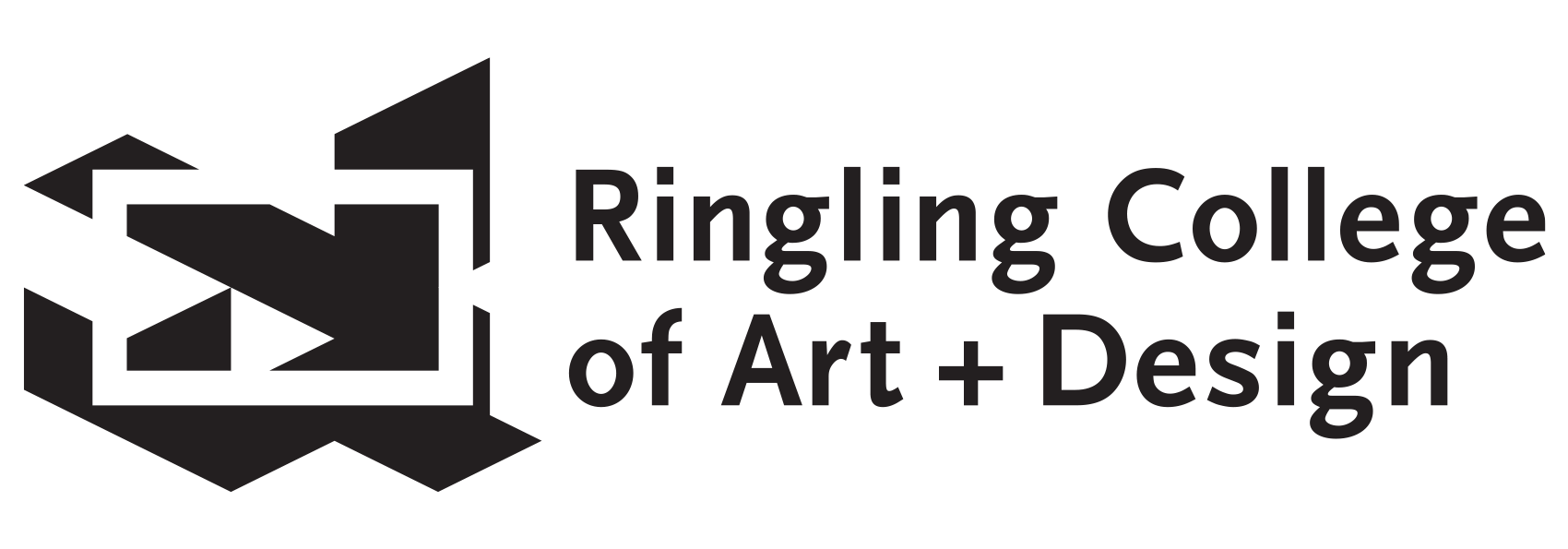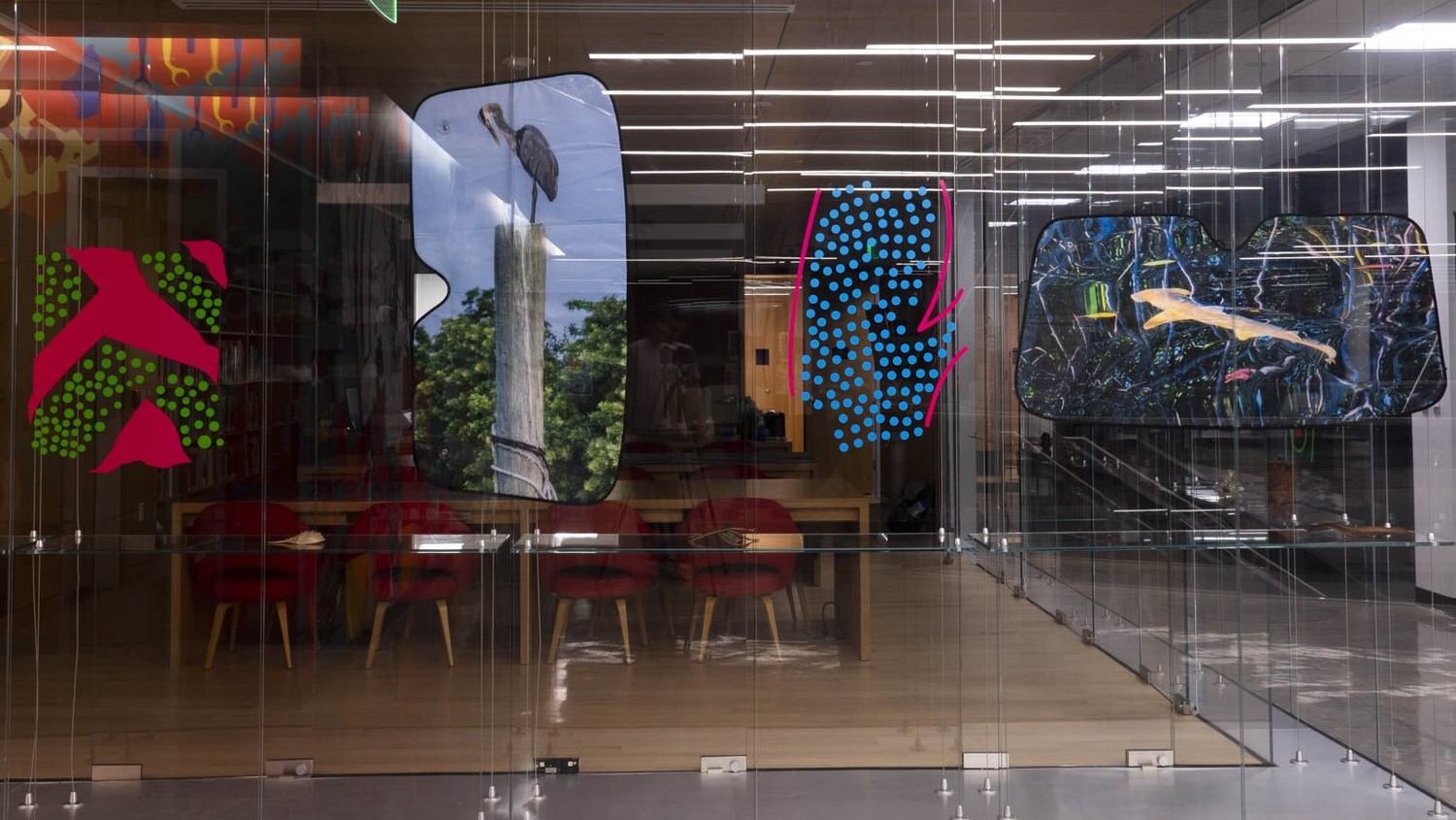Students, faculty, and staff visiting the second floor of the Alfred R. Goldstein Library this month will have encountered the colorful depictions of nature featured in the window displays of the Brizdle-Schoenberg Special Collections Center. Photographs of flora and fauna are transformed into sculptural objects, printed onto the familiar form of sun visors. The works read like an advertisement for nature with no intent on a financial return. They belong to the artist, researcher, theologian, social rights activist, and trial lawyer Jay Youngdahl. The exhibition marks the first from an artist or curator from outside the College community.
Originally from Little Rock, AR, Youngdahl has since lived all over the country, including Chicago, where he received his MFA from the School of the Art Institute of Chicago, and most recently Oakland. As a trial lawyer, Youngdahl represented Navajo railroad workers in New Mexico. At 16 he was arrested as a union organizer in Louisiana. After moving to St. Petersburg, he became a regular visitor to the Special Collections Center and expressed an interest in getting involved. Digital Curation and Special Collections Librarian Janelle Rebel invited Youngdahl to propose an exhibition and a few months later the show was in the works.
A perfect fit for the Special Collections Library, The Mangroves of Masters Bayou applies Youngdahl’s research practice to the Florida wetland landscape. His process for the series began with observation of the site. Youngdahl, a recent transplant to St. Petersburg, regularly visited the Masters Bayou by kayak. Each visit to the location left him with new questions: where does the name come from; what is that green film covering the water — and is it a sign of doom; who has called this site home; and what can humans learn from the transactional relationships found in this natural setting — beyond the biological? Youngdahl took these questions to a series of experts whom he considers collaborators on this project.
Each question took Youngdahl down a research rabbit-hole. The film covering the surface of the water? Reading a book on the history of slime enlightened Youngdahl to some religious theories that humans originated from slime. The algae-like film Youngdahl discovered at the mangroves creates oxygen. This particular slime is responsible for transforming our planet into its current oxygenated state, killing off whatever could not live with the gas. The name? Named after Joseph Masters, an early white settler in the region. The outcome of this research is translated into the sun visors (which are functional), glass drawings, a collection of artifacts (presumably found on the site), and a zine that distills the larger works into a small and singular object.
The Brizdle-Schoenberg Special Collections Center specializes in artists’ publication projects, prints, and illustrated rare books. They are supported by the Ringling College Library Association. Their pedagogy includes broadening the scope of materials one might engage with at a library. Visitors to the center will discover a range of books, printed materials, and primary sources from independent artist publishing — to historic objects — to prints from guest artists of the past. The collection is used by classes, groups, and individual researchers and is open to students, faculty, staff, and members of the public by appointment. Visitors can tell the librarians what specific books, art, or ephemera they are interested in viewing, or they can schedule a research consultation to discover materials in the collection.
*Note: The Alfred R. Goldstein Library is currently swipe-access only, accessible with a Ringling College ID. Members of the public can make an appointment to see the exhibition Monday-Friday.



